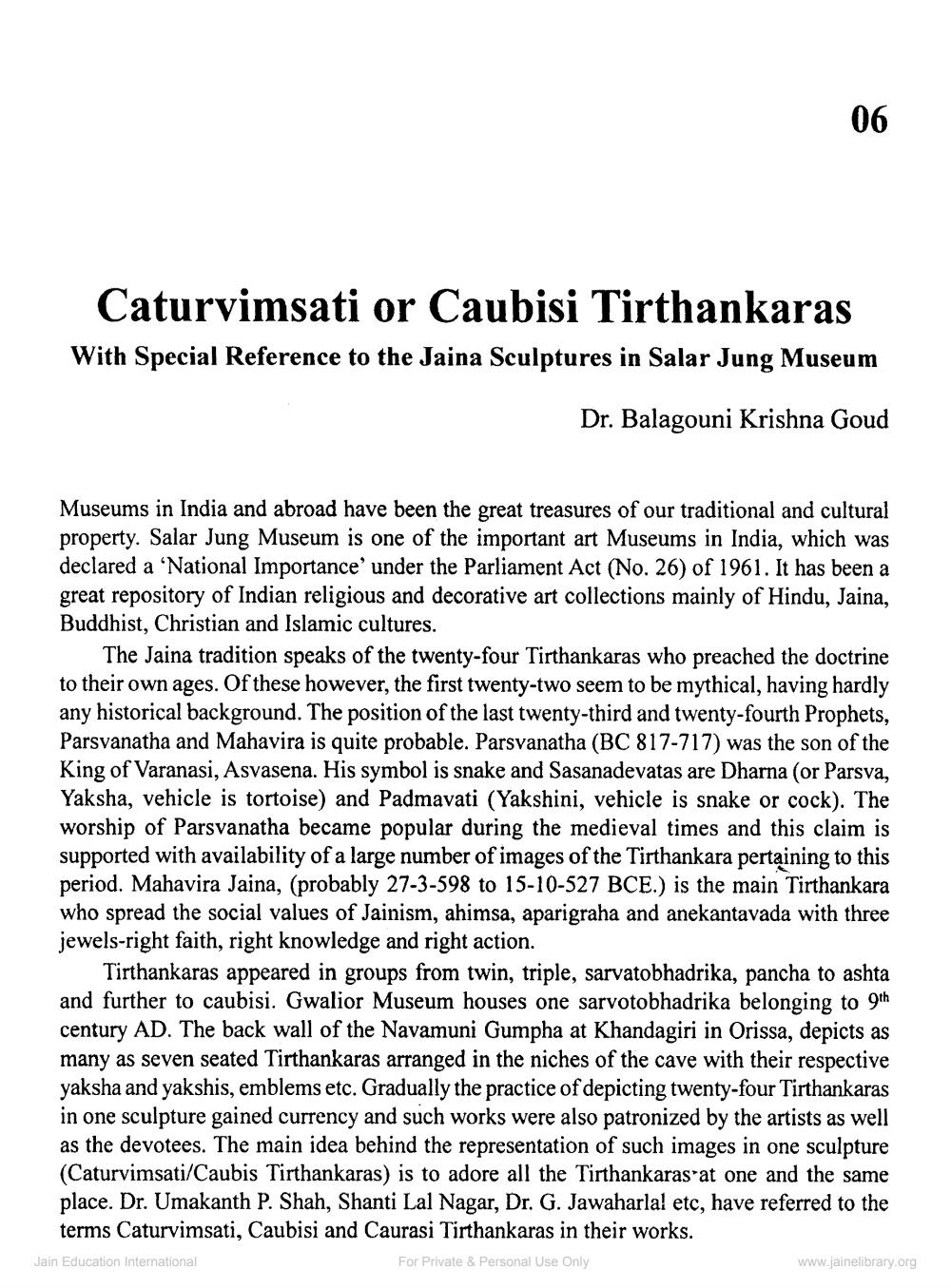________________
06
Caturvimsati or Caubisi Tirthankaras With Special Reference to the Jaina Sculptures in Salar Jung Museum
Dr. Balagouni Krishna Goud
Museums in India and abroad have been the great treasures of our traditional and cultural property. Salar Jung Museum is one of the important art Museums in India, which was declared a National Importance under the Parliament Act (No. 26) of 1961. It has been a great repository of Indian religious and decorative art collections mainly of Hindu, Jaina, Buddhist, Christian and Islamic cultures.
The Jaina tradition speaks of the twenty-four Tirthankaras who preached the doctrine to their own ages. Of these however, the first twenty-two seem to be mythical, having hardly any historical background. The position of the last twenty-third and twenty-fourth Prophets, Parsvanatha and Mahavira is quite probable. Parsvanatha (BC817-717) was the son of the King of Varanasi, Asvasena. His symbol is snake and Sasanadevatas are Dharna (or Parsva, Yaksha, vehicle is tortoise) and Padmavati (Yakshini, vehicle is snake or cock). The worship of Parsvanatha became popular during the medieval times and this claim is supported with availability of a large number of images of the Tirthankara pertaining to this period. Mahavira Jaina, (probably 27-3-598 to 15-10-527 BCE.) is the main Tirthankara who spread the social values of Jainism, ahimsa, aparigraha and anekantavada with three jewels-right faith, right knowledge and right action.
Tirthankaras appeared in groups from twin, triple, sarvatobhadrika, pancha to ashta and further to caubisi. Gwalior Museum houses one sarvotobhadrika belonging to 9th century AD. The back wall of the Navamuni Gumpha at Khandagiri in Orissa, depicts as many as seven seated Tirthankaras arranged in the niches of the cave with their respective yaksha and yakshis, emblems etc. Gradually the practice of depicting twenty-four Tirthankaras
one sculpture gained currency and such works were also patronized by the artists as well as the devotees. The main idea behind the representation of such images in one sculpture (Caturvimsati/Caubis Tirthankaras) is to adore all the Tirthankaras at one and the same place. Dr. Umakanth P. Shah, Shanti Lal Nagar, Dr. G. Jawaharlal etc, have referred to the
terms Caturvimsati, Caubisi and Caurasi Tirthankaras in their works. Jain Education International For Private & Personal Use Only
www.jainelibrary.org




